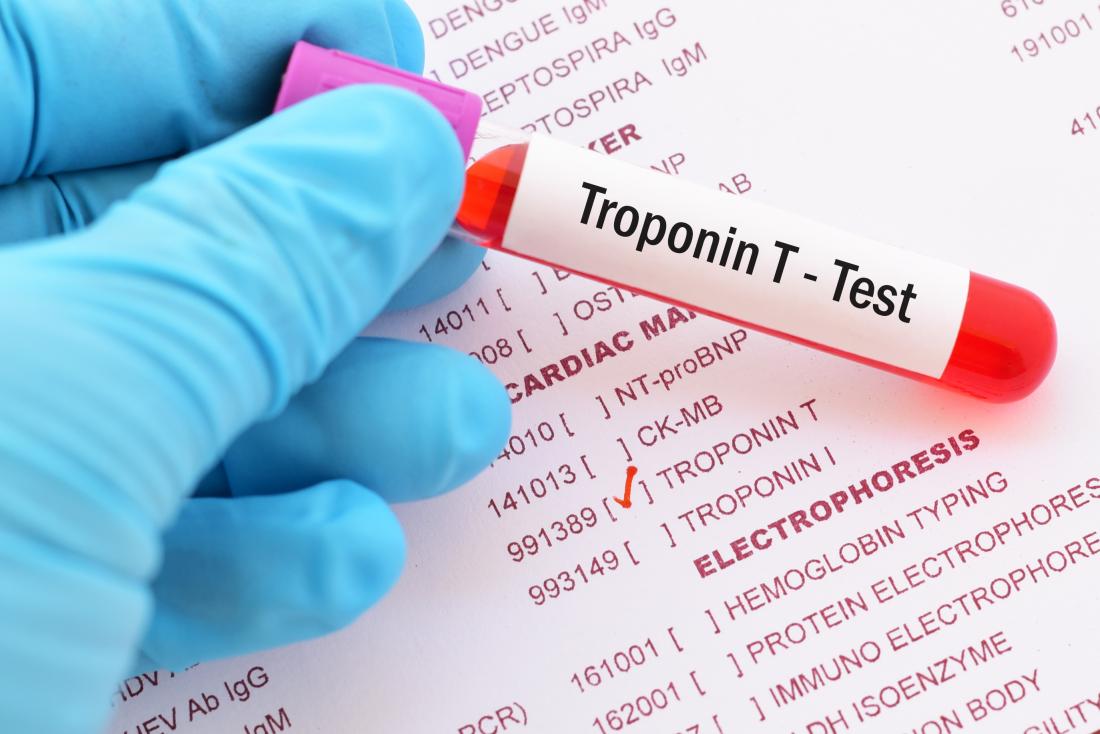Source: Thailand Medical News Jan 08, 2020 5 years, 2 months, 3 weeks, 4 days, 23 hours, 9 minutes ago
According to a new Swiss study published in the
Annals of Internal Medicine, even very low concentrations of high-sensitivity
cardiac troponin I (
hs-cTnI) cannot safely rule out inducible myocardial
ischemia in patients with symptomatic
coronary artery disease (
CAD).

Typically,
troponins are proteins found in the
cardiac and skeletal muscles. When the
heart is damaged, it releases
troponin into the bloodstream. Doctors measure your
troponin levels to detect whether or not you’re experiencing a
heart attack. This test can also help doctors find the best treatment sooner.
In the past, doctors used other blood tests to detect a
heart attack. This wasn’t effective, however, because the tests weren’t sensitive enough to detect every attack. They also involved substances that weren’t specific enough to the
heart muscle. Smaller
heart attacks left no trace on blood tests.
Troponin is more sensitive. Measuring
cardiac troponin levels in the blood allows doctors to diagnose a
heart attack or other
heart-related conditions more effectively, and provide immediate treatment.
Troponin proteins are split into three subunits:
troponin C (TnC),
troponin T (TnT) and
troponin I (TnI)
However findings from this new study questions the reliability of using
troponin levels to rule out
ischemia.
Dr Joan Walter, M.D., Ph.D., from University Hospital Basel in Switzerland, and colleagues measured circulating
hs-cTn concentrations among 1,896 consecutive patients with
coronary artery disease referred with symptoms possibly related to inducible myocardial
ischemia. Providers were blinded to results from tests used to adjudicate the presence of inducible myocardial
ischemia, including myocardial perfusion imaging with single-photon emission computed tomography and, when available, coronary angiography and fractional flow reserve measurements.
The medical researchers found that 46 percent of patients had inducible myocardial
ischemia. A cutoff value of 2.5 ng/L for
hs-cTnI provided a negative predictive value (NPV) of 70 percent and a sensitivity of 90 percent for exclusion of inducible myocardial
ischemia. There was no
hs-cTnI cutoff that reached both predefined performance characteristic targets. With alternative assays (
hs-cTnI or
hs-cTnT), there was no cut
off that achieved the target performance:
hs-cTnT concentrations <5 ng/L yielded an NPV of 66 percent, and
hs-cTnI concentrations <2 ng/L yielded an NPV of 68 percent.
Dr Walter told
Thailand Medical News via a phone interview, "In conclusion, in symptomatic patients with
coronary artery disease, very low
hs-cTn concentrations, including
hs-cTnI-Architect concentrations below 2.5 ng/L, do not generally allow users to safely exclude inducible myocardial
ischemia."
Several authors report financial ties to Abbott, Roche, Schiller, and Singulex, all of which provided funding for the study.
Reference: Walter J, du Fay de Lavallaz J, Koechlin L, et al. Using High-Sensitivity Cardiac Troponin for the Exclusion of Inducible Myocardial Ischemia in Symptomatic Patients: A Cohort Study. Ann Intern Med. 2020; doi: https://doi.org/10.7326/M19-0080 